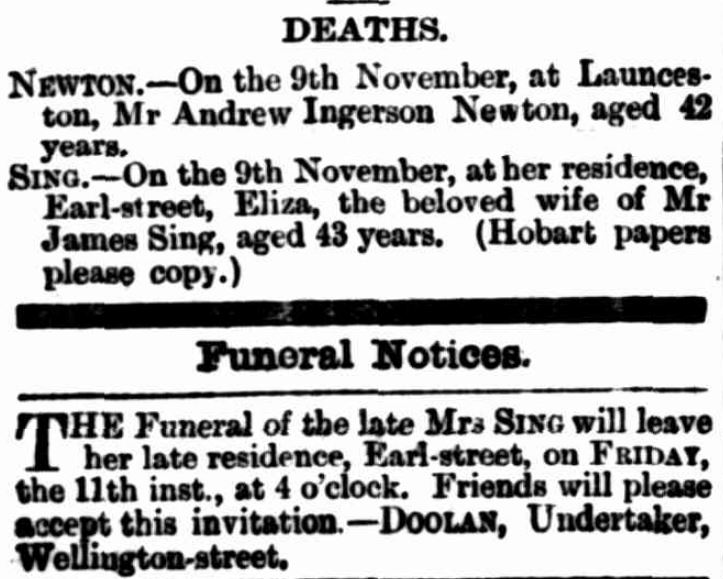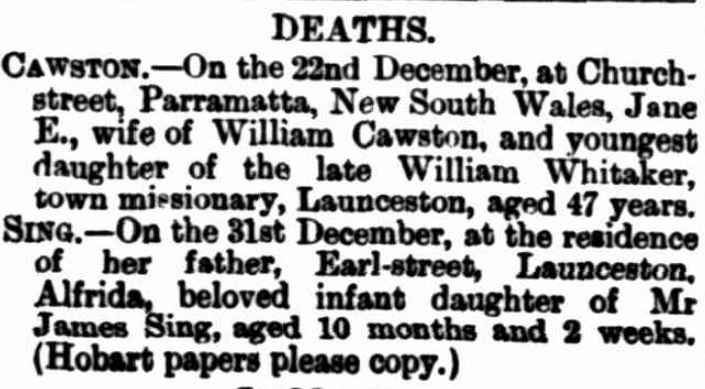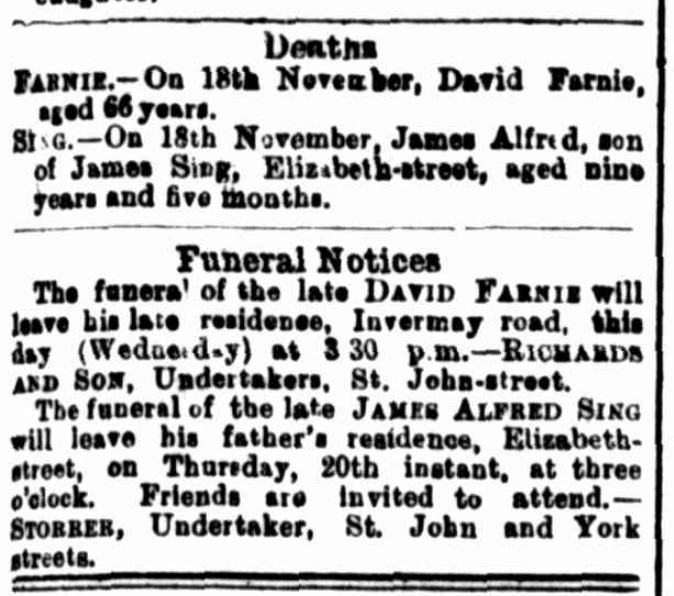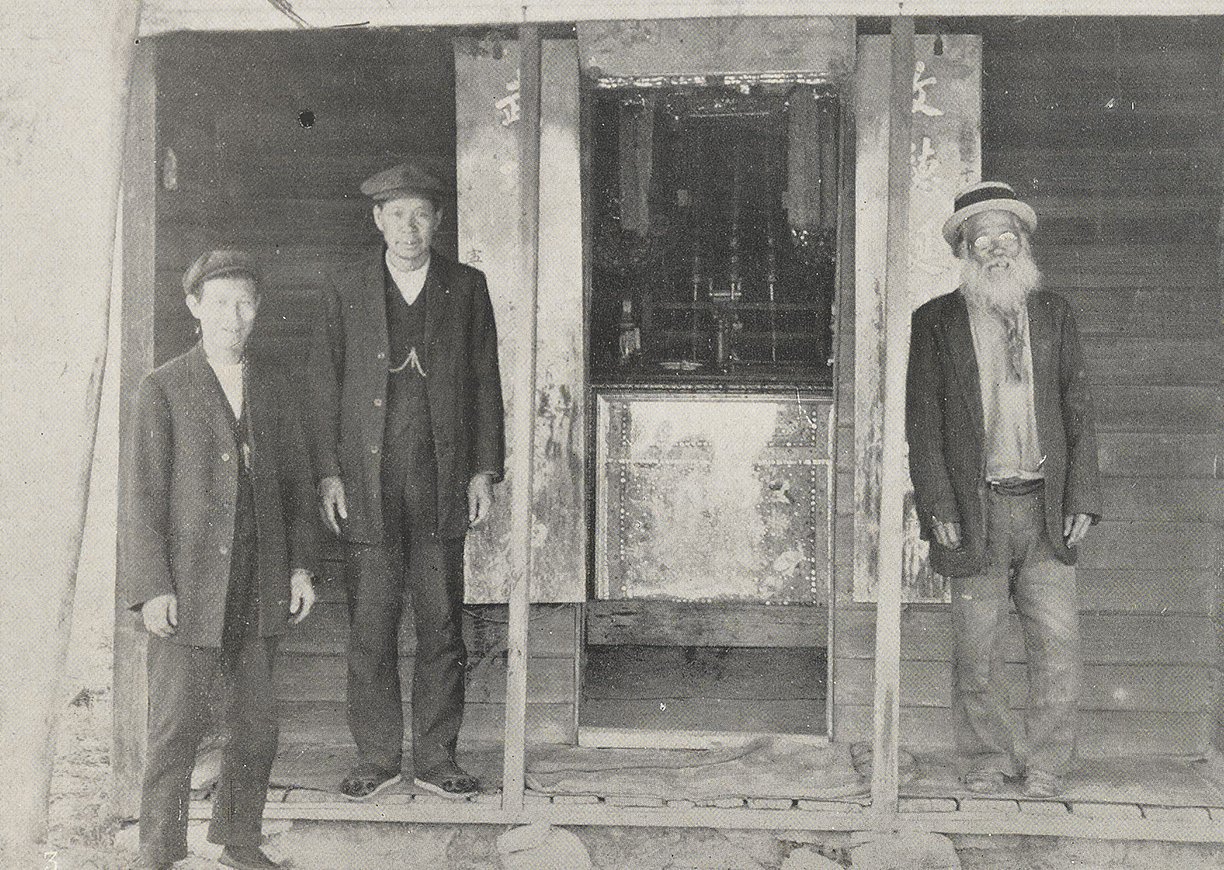[Obviously there is more that can be added about this family, but this is enough for the purposes of this blog.]
The first Europeans to commercially fish for abalone in Tasmania were a group of Irish shark fishermen at Southport. When the Jesuit priest Father Julian Tennison-Woods visited Southport and he found ten families fishing for shark there and in Recerche Bay. They boiled down the livers for oil, sold the fins and used the flesh for fertilizer on their cabbage fields. When the weather was too rough to catch shark they speared abalone. The fins and the abalone were boiled and then dried by Wham Sing and his brother Teck at Southport and shipped to Hobart for export to the goldfields. According to Tenison-Woods the Sydney merchant Chin Ateak was prepared to pay 9d a pound in 1880 for any quantity of the shellfish that was ‘much esteemed by the Chinese’. The priest found that although abalone were abundant ‘it was too troublesome a fishery to make it a pursuit, except when nothing else could be caught.’
The Tasmanian Abalone Fishery: A Personal History

MARRIAGES: Wham Sing & Eliza Palmer, Franklin district 1864 RGD37/1/23 p62
An act of charity, deserving of record, has just been performed by some splitters from Southport, who arrived in town early yesterday morning. It appears that a man named John Fisher, and his daughter Mary Fisher, 16 years of age had for some days been suffering from severe illness and were unable to procure medical attendance, they being in extremely destitute circumstances, and there being no doctor resident nearer to their place of abode than Three Hut Point. Under these circumstances the men referred to, whose names are Edward Isaacson, James Warren, John Burgess, Henry Silvester, and George Asher, obtained the use of a whaleboat belonging to James Sing, a native of China, living at Southport, and volunteered to bring the invalids to town, free of charge. They accordingly started on their mission of mercy at about 3 p. m. on Thurs-day, but whilst on the voyage hither the girl died. As soon as the boat reached town the body was conveyed to the hospital dead-house by the police, and the girl’s father was also removed to the institution, where he still lies under treatment.
The Mercury, 10 April 1869

DEATH: Avis Aella Sing, Esperance district 1871 RGD 35/1/40 p63
BATES V. SING.-This was an action brought by Jos. Bates, of the barge Redwing, against James Sing, a Chinaman, residing at Southport, to recover £21 for breach of contract, for not loading plaintiff’s barge with certain staves as agreed. Defendant, by his plea, denied the contract.
Mr. Charles Ball appeared for the plaintiff ; Mr. P. Crisp for defendant.
The plaintiff, sworn, proved the defendant had sent for him in the middle of December last, to proceed to Southport to bring to town a cargo of staves for the defendant, and that on his arrival at Southport the defendant had stated he had only half the staves left, the other half having been washed away. The defendant declined sending the staves he had to town, but offered plaintiff 10s. for his trouble. Plaintiff estimated his damages at the amount claimed. Mr. Crisp addressed the jury, and called the defendant, who denied any knowledge of plaintiff, but admitted requesting a man named Geary to send some craft for the staves ; and further stated that the staves had been washed away, and that plaintiff required too much to bring the remaining staves to town. The respective counsel having replied, and His Honor summed up, the jury, without retiring, returned a verdict for plaintiff, damages £8 15s. Mr. Crisp applied for a new trial, as the verdict was against the weight of evidence.
The Mercury, 19 April 1876
MAINTENANCE.-Eliza Sing proceeded against Lee Hung for having failed to contribute to the support of his child.
Mr Miller appeared for the complainant, and Mr Powell for the defendant.
Eliza Sing stated she knew the defendant, and also his late wife ; she came to Launceston about two years ago and died, leaving behind her an infant, whom she bequeathed to her (witness’s) care; the defendant paid for the maintenance of his child regularly at first, but he had not contributed anything since last April ; owing to the delicate condition of the child’s health, witness charged him 10s per week for rearing it.
James Sing, husband of the last witness, asserted to having asked the defendant to contribute towards the support of his child, but he refused to do so ; he also told witness he could threw it into the streets.
Mr Powell stated that his client was a poor man and could not afford to pay 10s per week. The reason lie allowed the case to come before the Court was so that the Bench might fix a weekly sum, to be paid for his child’s support.
The Bench ordered the defendant to contribute 6s per week towards his child’s maintenance, and to enter into his own recognizance in the sum of £25, and also find one surety in the same amount, as a guarantee for payment of the amount.
Launceston Examiner, 20 August 1881
DISGRACEFUL CONDUCT-Information has been supplied to us of a very disgraceful affair that occurred yesterday afternoon in Wellington-street, and which illustrates the singular proneness of some persons to seek pleasure in molesting and annoying foreigners, particularly those hailing from the Flowery Land. The Sunday school in connection with the Mission Church had just been closed, when on reaching the street some of the scholars attacked three children of Mr. James Sing, of George-street-two boys and one girl. The assailants numbered some twenty, amongst them being youths of 17 and 18 years of age. The father of the persecuted children is a Chinaman, and has been living in Launceston five or six years ; whilst the mother is a respectable Englishwoman. The children, ‘who also attended the Mission Sunday-school, were assailed with bricks, stones, and anything which came to hand,’ and ‘sustained injuries. One of the lads was struck twice with a missile on the arm, which last night was swollen considerably; the other children also being hit several times. It is strange and humiliating that such things can be done in our midst, more especially by those who call themselves Christians, and attend a place where brotherly love is inculcated. Our readers will not be surprised to learn that it is the intention of the father, should similar treatment be experienced again, to take his wrongs to the Police Court for remedy. As the names of the offenders are known, they are indebted to the forbearance of those they so cowardly persecuted that they have not to answer for their conduct of yesterday.
Launceston Examiner, 13 August 1883

DEATH: Eliza Sing, Launceston district, 1887

Daily Telegraph, 10 November 1887




